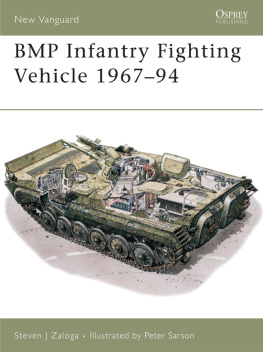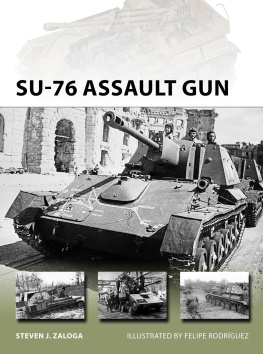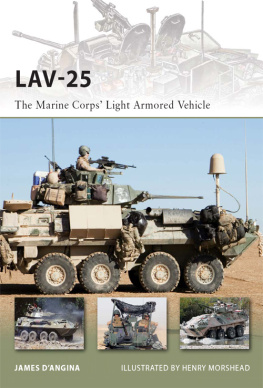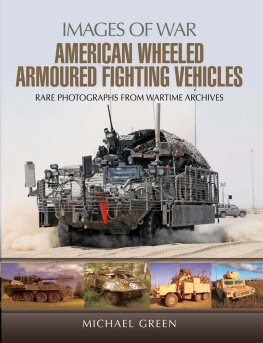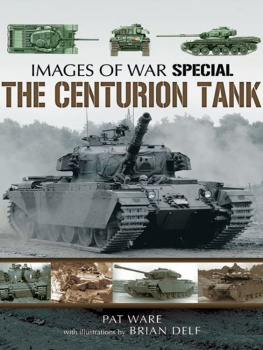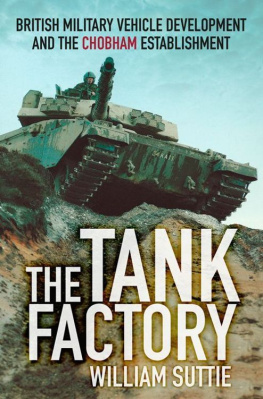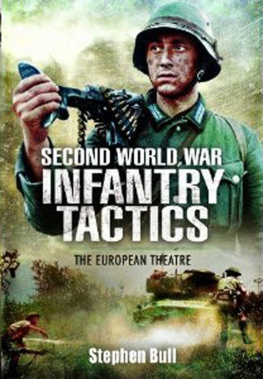Sarson Peter - BMP Infantry Fighting Vehicle 1967-94
Here you can read online Sarson Peter - BMP Infantry Fighting Vehicle 1967-94 full text of the book (entire story) in english for free. Download pdf and epub, get meaning, cover and reviews about this ebook. City: London, year: 2013, publisher: Osprey Publishing;Bloomsbury Publishing Plc, genre: Science fiction. Description of the work, (preface) as well as reviews are available. Best literature library LitArk.com created for fans of good reading and offers a wide selection of genres:
Romance novel
Science fiction
Adventure
Detective
Science
History
Home and family
Prose
Art
Politics
Computer
Non-fiction
Religion
Business
Children
Humor
Choose a favorite category and find really read worthwhile books. Enjoy immersion in the world of imagination, feel the emotions of the characters or learn something new for yourself, make an fascinating discovery.
- Book:BMP Infantry Fighting Vehicle 1967-94
- Author:
- Publisher:Osprey Publishing;Bloomsbury Publishing Plc
- Genre:
- Year:2013
- City:London
- Rating:3 / 5
- Favourites:Add to favourites
- Your mark:
- 60
- 1
- 2
- 3
- 4
- 5
BMP Infantry Fighting Vehicle 1967-94: summary, description and annotation
We offer to read an annotation, description, summary or preface (depends on what the author of the book "BMP Infantry Fighting Vehicle 1967-94" wrote himself). If you haven't found the necessary information about the book — write in the comments, we will try to find it.
BMP Infantry Fighting Vehicle 1967-94 — read online for free the complete book (whole text) full work
Below is the text of the book, divided by pages. System saving the place of the last page read, allows you to conveniently read the book "BMP Infantry Fighting Vehicle 1967-94" online for free, without having to search again every time where you left off. Put a bookmark, and you can go to the page where you finished reading at any time.
Font size:
Interval:
Bookmark:
New Vanguard 12
BMP Infantry Fighting Vehicle 196794
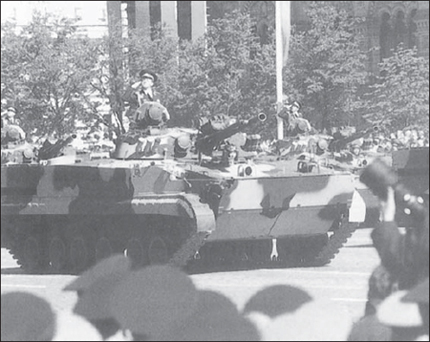
Steven J Zaloga Illustrated by Peter Sarson
The Russian BMP infantry fighting vehicle (IFV) was one of the most significant innovations in infantry tactics in the latter half of the 20th century. It was the worlds first IFV and represented another milestone in the evolution of infantry tactics and technology. The BMP represented an important change in mechanised infantry tactics, providing the infantry squad with unprecedented firepower, mobility and protection. Later other armies specified vehicles like the German Marder, American M2 Bradley and the British Warrior. With over 55,000 manufactured since 1966, it is also numerically one of the most important armoured vehicles ever built.
The appearence of the BMP in 1967 was all the more surprising given the Red Armys relative backwardness in armoured infantry vehicles. During the Second World War, the Red Army was the only major army not to field any significant number of armoured infantry transporters. These vehicles, such as the German SdKfz 251, the British Universal Carrier and the US M3 half-track, were the first serious attempt to permit infantry units to keep pace with tanks on the battlefield to provide mutual support. As such, they were a vital ingredient in the development of modern combined arms tactics. The Red Army did not receive any armoured infantry vehicles during WW2 because they were of low priority; Mother Russia concentrated its industrial resources on tank and assault gun production. German officers have long agreed that the lack of mechanised infantry was one of the principal shortcomings in Soviet tactics.
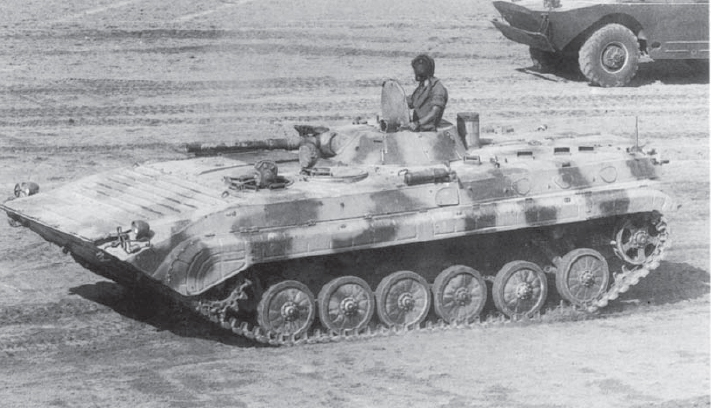
The appearance of the BMP-1 IFV during the 1973 Middle East war marked the combat debut of this new category of infantry fighting vehicles. The BMP-1 was available in too small a number to have any significant impact on the fighting, but led to worldwide interest in this innovation in infantry tactics and technology.
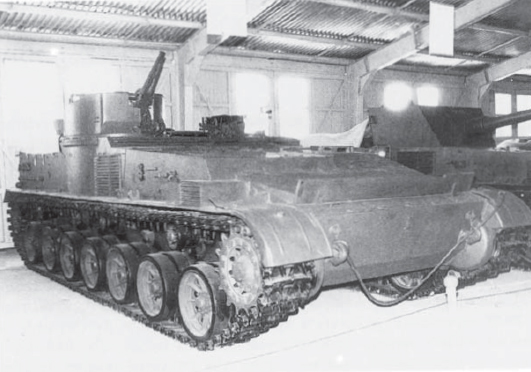
The first serious attempt at developing a tracked infantry vehicle in the USSR was Gorlitskiys Obiekt 112. This was designed to carry 25 infantrymen and was armed with a heavy machine-gun in the pulpit on the right. It proved too expensive and complicated for the Red Army in 1949, but served as the basis for the 2S3 Akatsiya, 2S4 Tyulpan and 2S5 Giatsint SP artillery vehicles.
Following the war, the Red Army began to gradually mechanise its infantry. It had some experience with armoured infantry transporters, having received both Universal Carriers and American half-tracks through Lend-Lease and having captured German SdKfz 251 half-tracks. The half-track approach was not popular as it combined the complexity and cost of tracked vehicles but lacked the superior mobility of fully-tracked vehicles. This was not a unique viewpoint half-track suspensions were almost universally abandoned after 1945 in favour of wheeled or tracked configurations.
The first armoured infantry vehicle adopted by the Red Army, the BTR-152, was patterned after the American M3 half-track and German SdKfz 251, using a wheeled chassis instead of a half-track chassis. The BTR-152 was a particularly unimpressive vehicle, inferior in mobility to its wartime ancestors and little more than an armoured truck. But it was cheap and had low operating costs rather important when one considers that the Red Army needed to mechanise over 120 rifle divisions. The BTR-152 was only a first step in infantry mechanisation.
By the early 1950s, some NATO armies were turning towards tracked infantry transporters. Unlike the wartime half-tracks or the Universal Carrier, they had full armour protection including their roofs. The tracked suspension gave them superior mobility to wheeled transporters over poor terrain, especially snow and mud. This generation of infantry vehicles were commonly termed APCs: Armoured Personnel Carriers. Some pioneering examples were the US Armys M59, Britains FV432, and the German Bundeswehrs HS.30.
The Red Army began some experiments with tracked infantry vehicles after 1945. The simplest of these was the K-75, an open-topped transporter carrying 17 troops, and developed by Col. A.F. Kravtsov from a stretched T-70 light tank chassis at the Moscow Engineers Workshop. A far more ambitious design was the Obiekt 112, a medium transporter capable of carrying 25 infantrymen in a fully armoured rear compartment. Developed by the Gorlitskiy design team in Sverdlovsk it weighed 18 tons, but was too complicated and expensive for 1949 and so never entered production. Nevertheless, it proved to be important in later years as the basis for the GM-100 series of armoured chassis, being used on many vehicles such as the 2S3 Akatsiya 152mm self-propelled howitzer and the 2P24 Krug (NATO: SA-4 Ganef) mobile surface-to-air missile (SAM) launcher. The third tracked carrier under development in the late 1940s was the K-78, also developed by Kravtsov. This was an amphibious infantry transporter developed alongside the new K-90 amphibious scout tank. In the end, neither the K-78 nor K-90 reached production. But they formed the basis for the PT-76 amphibious scout tank, and the first post-war Soviet tracked APC, the BTR-50.
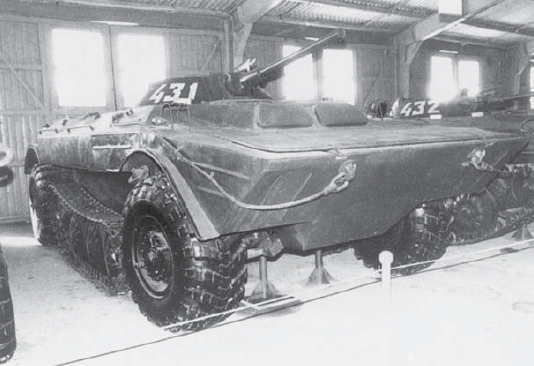
The most unusual of the BMPs competitors was the Rubtsovsk Obiekt 19 half-track. The tracks in the centre of the vehicle could be lowered to the ground to provide improved traction in soft soil or snow, while the wheels alone would offer superior mobility on roads or hard surfaces.
Experience with the BTR-152 showed that simple armoured trucks had serious shortcomings as infantry transporters. This was particularly evident in the tank divisions, where the infantry vehicles were expected to keep up. The BTR-152 had virtually no cross-country capability in rough or soft terrain, and was essentially road-bound. In 1951, the Kotin design bureau in Leningrad developed a tracked infantry transporter for the motor rifle regiments of the tank divisions, using the new PT-76 scout tank chassis. This vehicle, the BTR-50P, was a straightforward adaption of the PT-76; in place of the turret, a simple, open box superstructure was added on the hull front. The resulting vehicle could be used to transport 20 troops on simple bench seats, or could carry up to two tons of equipment.
The BTR-50P was not entirely satisfactory as an armoured infantry vehicle. Though more mobile than the BTR-152, the design was poorly configured for entrance and exit. Troops had to climb up the sides to get aboard, which was a time-consuming nuisance when field equipped. Exit was equally slow, and far more dangerous under fire since the troops had to clamber over the roof. In addition, the Russians were coming to realise that armoured infantry vehicles should be tailored to squad size. The BTR-50P carried two squads, or 20 troops. Since Red Army motor rifle companies were triadic (three platoons of three squads each), there was inevitably a bit of confusion mixing squads from different platoons together in the same transporter. As in most NATO countries of the period, the 1960s saw a general shift away from large armoured troop carriers to slightly smaller carriers suitable for a single squad. By the late 1960s, each motor rifle company was given its own armored infantry transporters, with one squad in each transporter.
Next pageFont size:
Interval:
Bookmark:
Similar books «BMP Infantry Fighting Vehicle 1967-94»
Look at similar books to BMP Infantry Fighting Vehicle 1967-94. We have selected literature similar in name and meaning in the hope of providing readers with more options to find new, interesting, not yet read works.
Discussion, reviews of the book BMP Infantry Fighting Vehicle 1967-94 and just readers' own opinions. Leave your comments, write what you think about the work, its meaning or the main characters. Specify what exactly you liked and what you didn't like, and why you think so.

